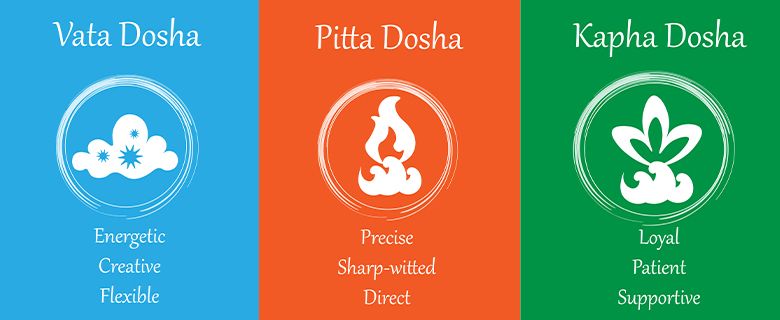
HOW DOES THE MONSOON AFFECT EACH DOSHA – VATA, PITTA OR KAPHA?
Ayurveda states that certain changes in the climatic conditions (Rutu) create an impact on our body. And to cope with these changes, Ayurveda recommends certain exercises and modifications in food habits. This is collectively termed as Rutucharya. Here Rutu means the six 2-month phases where the climate and environment varies and Charya means following certain rules pertaining to Aahar (food habits) and Vihaar (physical activities). Varsha Rutu (rainy season) falling in the Uttarayan (northern solstice), is known to drain a person’s bala (strength/immunity) and weaken the digestive function. And in today’s troubling times, having your immunity at its peak is more important than ever.
THE THREE DOSHAS – VATA, PITTA AND KAPHA
According to Ayurveda, each person is born with a particular prakruti which is the body’s natural state of being. This is determined by the three doshas – vata, pitta and kapha. Your prakruti depends on the dominant dosha, which could be one or two out of the three doshas. The imbalance in these three doshas results in the origin of diseases and disorders. Your lifestyle, the seasonal fluctuations and the environment affect the tridosha differently in every season.
Before you know how monsoon affects different doshas, you should first find out your tridosha balance. Take our 10-minute Prakruti quiz to understand your prakruti and the tips that are more applicable to you.
WHAT HAPPENS TO EACH DOSHA DURING THE MONSOON?

- Your agni (digestive fire) is weaker in the rainy season, resulting in lower digestive and metabolic strength, which suppresses your body’s ability to fight diseases. This leads to indigestion issues, bloating, acidity, lethargy or weakness. As you can see, strong immunity correlates to the strength of a healthy digestive fire.
- The colder monsoon temperatures increase vata in the body organs. This can lead to health issues in the digestive or musculoskeletal systems. The tissue damage caused by excess vata in the monsoon further lowers your immunity.
Thus, during monsoon, vata is at a provoked stage, pitta toxins have started accumulating while kapha is at a moderate level. This imbalanced state brought about by the weather conditions is what affects your immunity levels. Let us understand the modifications in your diet and lifestyle that can help balance the three doshas and, in turn, strengthen the immune system.
MONSOON IMMUNITY TIPS FOR BALANCING VATA, PITTA AND KAPHA
Ayurvedic Therapies & Self-Care
Basti Karma:
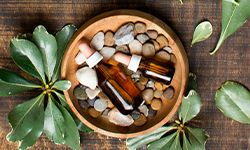
Basti is one of the 5 ayurvedic panchakarma treatments, carried out by an Ayurvedic expert. The procedure involves medicated oils and decoctions given as an enema. It cleans the colon and cleanses the accumulated body toxins, thus settling vata. Sesame oil, bala oil, sahachar oil, dashmula oil and decoction is commonly administered based on your health issues, age and prakruti, and as advised by the Ayurvedic practitioner.
Warm Clothing:

Vata dosha is formed through the composition of the elements of air & space. The cold environment can aggravate vata symptoms, which is why you should keep your body warm to stay protected.
Rainwear:

Contact with water can trigger vata symptoms. Avoid going out in the rain or wear protective clothing to prevent your head and body from getting wet. As a safety precaution, always carry an umbrella while stepping out during monsoons.
Dry Your Hair:

After your morning bath, dry your hair thoroughly. A dry hair and scalp prevent a cold, cough, headache, heaviness or blocked nose. In case you get drenched in the rains, change out of wet clothes and dry your hair immediately.
Disinfect Clothes:

Monsoon brings with it fungal skin infections. Fumigate your wardrobe with ayurvedic herbs like vacha, kushtha, vidanga or vavading to prevent fungal growth.
Nutrition
Dietary Composition:
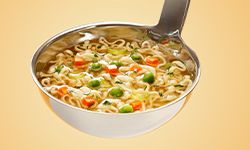
Your monsoon diet should be laghu (light), ushna (hot) and snigdh (unctuous) to counter respiratory infections in the cold and humid rainy days. Light food will never burden a weak digestive fire. Hot and unctuous food pacifies vata, enhances agni, provides strength and relieves pain.
Ghee:
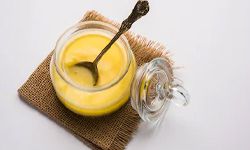
Ayurveda has described ghee as Yogavahi – a catalytic agent that carries healing properties. Pure ghee in your daily food enhances agni (digestive fire), ensures a healthy digestive system, heals the stomach lining and pacifies vata.
Exercise
Surya namaskar:
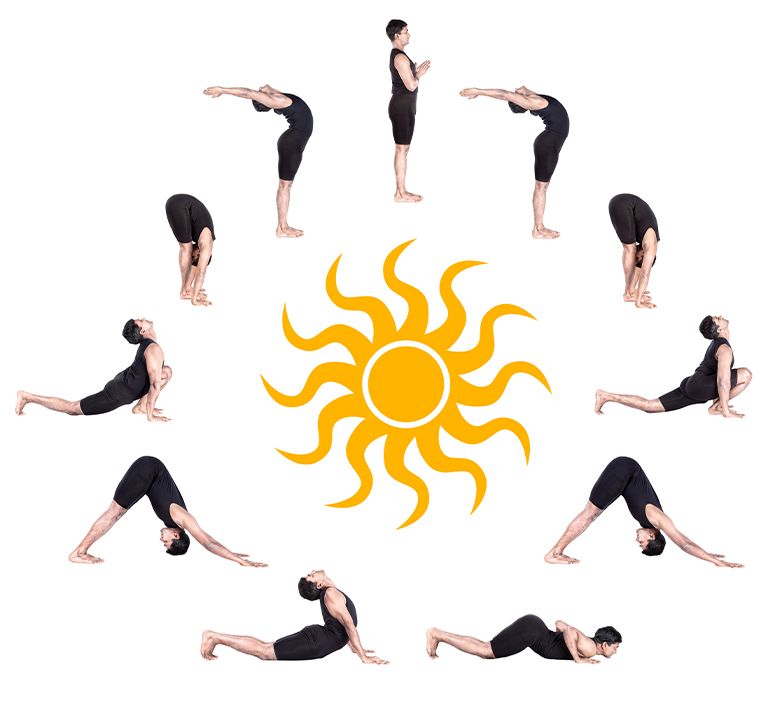
Pranayama:

During the monsoon, practise Anulom Vilom, Kapalbhati and Bhastrika Pranayama. These breathing techniques improve lung capacity, strengthen the diaphragm and abdominal muscles, increase oxygen flow and benefit the immune system. Cardiac or blood pressure patients and pregnant women should avoid this Pranayama technique.
Avoid cooling breathing techniques in the monsoon weather like Sheetali or Sitakari as they lower your body temperature further.
Pace walking or jogging at half strength:
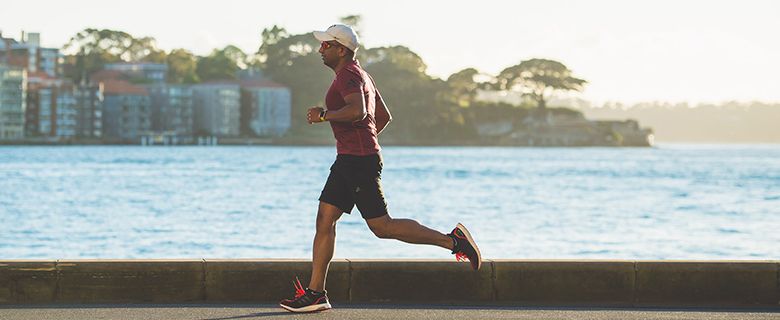
Practise these basic cardio exercises for 20-30 minutes or until you break out in a sweat.
-
Hygiene & Self-Care
- Opt for a basti karma treatment
- Wear warm clothing
- Protect yourself with proper rainwear
- Dry your hair
- Fumigate your clothes with Ayurvedic herbs like vacha, kushtha, vidanga or vavading
-
Nutrition
- Follow a laghu (light), ushna (hot) and snigdh (unctuous) monsoon diet
- Add pure cow’s ghee in your daily diet
-
Exercise
- Surya namaskar
- Anulom Vilom
- Kapalbhati
- Bhastrika
- Pace walking or jogging at half strength
PACIFYING VATA DURING THE MONSOON
The vata body type has the lowest level of immunity in the monsoon. Vata is cold, dry, rough, subtle and mobile in nature. During the monsoon, the winds blowing from the west are cold and humid. Vata, which is already saturated in the body tissues, is aggravated by the coldness and humidity. The mobile, disturbed vata damages body tissues, resulting in lower strength and stamina. The characteristics of varsha rutu (monsoons) and vata together lower bala (strength or immunity). Digestive fire is low (mandagni) as there are sheeta (cold), humid and mand (slow) guna present in nature.
In the case of the vata body type, immunity is based on the dosha balance and agni (digestive fire), both of which are already disrupted in the rainy season. Since vata dosha stays within the respiratory system, an imbalance can lead to a cold, blocked or runny nose, cough, sore throat, flu, fever, or asthma.
MONSOON IMMUNITY TIPS FOR PEOPLE WITH VATA DOSHA
Self-Care
Oil Massage:

Use vata-pacifying body massage oils like nirgudi, shatavari, dashamula or sesame. These oils create a warming effect and thus ground vata. A daily full body self-massage can provide great results.
Nutrition
Preferred Food:
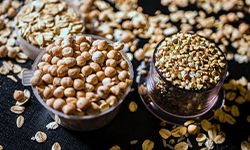
Add jowar, bajara, green moong, drum sticks, old wheat and old rice to your diet, all of which are known to have light, hot and unctuous properties.
Forbidden Food:
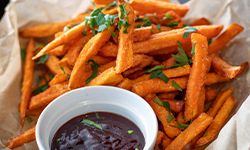
Limit the intake of fried food to settle the ruksha (dry) guna of vata.
Yogasana
Vajrasana:

This asana derives its name from Vajra – thunderbolt and asana – posture. Vajrasana increases the blood flow to your pelvic area and stomach, thus improving digestion, bowel movement and liver functions. It helps strengthen the lower back, legs and thighs.
Pavanamuktasana:

In Sanskrit, pavanamuktasana literally translates to gas relief pose. Pavan means wind or gas, and mukta means liberation. This vata-pacifying asana strengthens the abdominal muscles, massages the digestive organs, releases trapped gas, and helps cure indigestion and acidity.
Vakrasana:

Vakrasana or twisted pose massages the abdominal organs, facilitates digestion and stimulates the secretion of digestive juices. This asana strengthens the spine and reduces vertebrae stiffness.
Ardha Matsyendrasana:

This asana derives its name from Ardha – half, Matsya – fish and Indra – lord. The compressing and twisting of the abdominal organs helps regulate the secretion of digestive juices, improves digestion and cures constipation. This asana increases the elasticity of the spine and relieves back aches and stiffness.
PACIFYING PITTA DURING THE MONSOON
During the monsoon, pitta starts accumulating in the body. As pitta is hot and sharp, the agni (digestive fire) is moderate. The coldness of varsha rutu (monsoon) decreases agni but does not diminish it. As stated in Ayurveda, people with pitta dosha have moderate bala (strength/immunity). The coldness and humidity in the air further reduces bala leading to lower immunity.
MONSOON IMMUNITY TIPS FOR PEOPLE WITH PITTA DOSHA
Self-Care
Oil Massage:
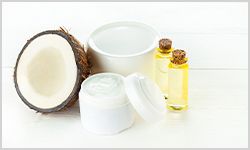
Use pitta-balancing body massage oils like narayan, bala, dashamula or olive. Pitta has a tendency of accumulation. These oils free such accumulations, promote healthy circulation and flush the toxins out of your system.
Nutrition
Preferred Food:

Add jowar, bajara, green moong, old wheat, old rice, bottle gourd, ridge gourd and pumpkin to your diet, all of which are known to have light, hot and unctuous properties.
Forbidden Food:

Limit the intake of fried food to settle the ruksha (dry) guna of vata. If you suffer from pitta or skin issues, try and avoid eating spicy food. Also, people with pitta dosha must avoid eating curd during the rainy season.
Yogasana
Naukasana:

This asana derives its name from Nauka – boat and Asana – posture. It strengthens the lung, liver, pancreas and kidneys, and tones the back muscles. Asthmatic or heart patients, and pregnant women should avoid this asana.
Bhujangasana:

This asana derives its name from Bhujanga – cobra and Asana – posture. It enhances blood circulation and respiratory function, strengthens the back & abdomen, and helps reduce acidity, ulcers and indigestion. People with past fractures in wrists or ribs, abdominal surgeries and ones suffering from Carpal Tunnel Syndrome should avoid this asana.
Dhanurasana:

Dhanurasana comes from the Sanskrit word Dhanur, meaning bow. This asana enhances lung capacity, strengthens the heart, stimulates the abdomen and improves the flexibility in the spine. Hypertensive patients and pregnant women should avoid this asana.
Uttanpadasana:

The name is derived from uttana – intense stretch, pada – leg/foot, and asana – pose/posture. It improves cardiovascular, digestive and musculoskeletal health. This asana is not recommended for patients with hypertension or cardiovascular diseases, and pregnant women.
PACIFYING KAPHA DURING THE MONSOON
Kapha is cold, heavy, unctuous, slow, soft and immobile in nature. Varsha rutu aggravates kapha since coldness is common in both natures. Kapha prakruti is naturally characterised by a low agni (digestive fire) which is further lowered by the coldness of varsha rutu. The kapha dosha is known to have high bala (body strength/immunity). Varsha rutu affects the kapha dosha slightly, leading to a moderate level of immunity. Since kapha dosha stays within the respiratory system, an imbalance can lead to a cold, blocked or runny nose, cough, sore throat, flu, fever, or asthma.
MONSOON IMMUNITY TIPS FOR PEOPLE WITH KAPHA DOSHA
Self-Care
Oil Massage:
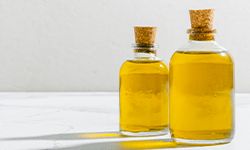
Use kapha-balancing body massage oils like sahachar, dashamula or mustard. These oils balance the slow and immobile nature of kapha and create an activating and mobilising effect. A vigorous warm oil massage stimulates circulation, cleanses the system and revitalises the body.
Avoid Daytime Naps:

Kapha dosha is known for its heavy nature. Sleeping during the daytime can add to this heaviness and aggravate kapha. This may lead to chest congestion, causing excess cold and cough
Nutrition
Preferred Food:

Add jowar, bajara, green moong, drum sticks, cluster beans and capsicum to your diet, all of which are known to have light, hot and unctuous properties.
Forbidden Food:
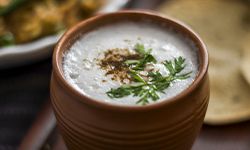
Limit the intake of fried food to settle the ruksha (dry) guna of vata. People with kapha dosha must avoid sweets, curd and other milk products (except ghee) during the monsoon.
Yogasana
Vajrasana:

Vajrasana or thunderbolt posture increases the blood flow to your pelvic area and stomach, thus improving digestion, bowel movement and liver functions. It helps strengthen the lower back, legs and thighs. Vajrasana also aids in reducing excess fat and weight management, making it beneficial for kapha type individuals.
Pavanamuktasana:

Pavanamuktasana or wind liberation pose strengthens the abdominal muscles, massages the digestive organs, releases trapped gas, and helps cure indigestion.
Gomukhasana:

The name is derived from go – cow, mukha – face and asana – posture. It opens up your joints and hips, strengthens the thighs and arms, improves flexibility in the spine, and enhances lung capacity and breath control.
Mandukasana:
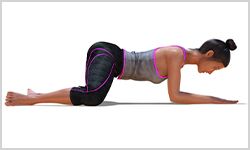
The name comes from manduka – frog and asana – pose/posture. It stimulates the functions of the pancreas, relieves constipation, releases gas, helps burn extra fat from the hips, stomach and thighs, and strengthens the back muscles. This asana is not recommended for hypertensive patients, individuals with knee injuries, and pregnant women.
-
Vata
Self-Care- Use vata-pacifying body massage oils like nirgudi, shatavari, dashamula or sesame
Nutrition- Add jowar, bajara, green moong, drum sticks, old wheat and old rice to your diet
- Avoid fried food
Yogasana- Vajrasana
- Pavanamuktasana
- Vakrasana
- Ardha Matsyendrasana
-
Pitta
Self-Care- Use pitta-balancing body massage oils like narayan, bala, dashamula or olive
Nutrition- Add jowar, bajara, green moong, old wheat, old rice, bottle gourd, ridge gourd and pumpkin to your diet
- Avoid fried food, spicy food and curd
Yogasana- Naukasana
- Bhujangasana
- Dhanurasana
- Uttanpadasana
-
Kapha
Self-Care- Use kapha-balancing body massage oils like sahachar, dashamula or mustard
- Avoid day-time naps
Nutrition- Add jowar, bajara, green moong, drum sticks, cluster beans and capsicum to your diet
- Avoid fried food, sweets, curd and other milk products (except ghee)
Yogasana- Vajrasana
- Pavanamuktasana
- Gomukhasana
- Mandukasana
As you might have observed, health management from the point of view of Ayurveda is highly personalised. This is essential because of the multiple permutations of prakruti (natural dosha) and vikruti (acquired dosha imbalance) prevalent among people. Talking to an expert ayurvedacharya can help you plan and customise a wellness regimen that is in accordance with your current physical state and the time of the year.
Our team at Mi.Bo.So, consisting of Ayurvedic vaidyas, nutritionists and yoga coaches, is here to guide you in your personalised wellness journey. We will recommend the right monsoon diet, exercise routine, Ayurvedic therapies & supplements, and also a sleep schedule to balance your prakruti and build your immunity, naturally. You will realise where you were going wrong, and be able to notice the changes in your health and immunity yourself.
If you have any queries, you can schedule an online session with our experts and we’ll be more than happy to help you.








0 Comment
No comments found.Thank you. Your comment will be visible after an approval.
Add your comment